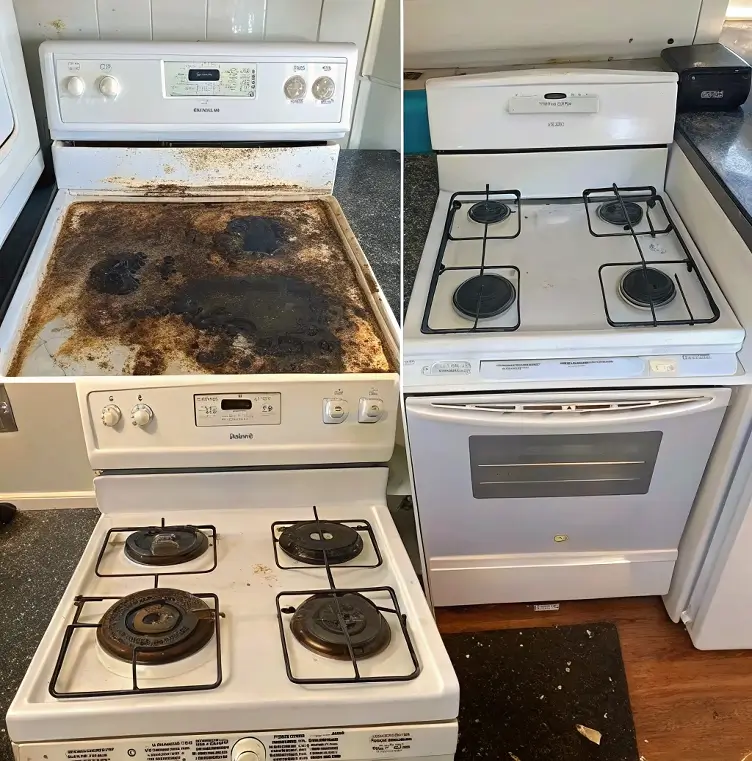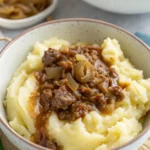Contents
Last weekend’s blizzard hit Halifax something fierce, and I found myself staring at my stovetop after a marathon soup-making session. Splatters everywhere! I’ve been using this homemade recipe for sparkling stoves for years now, and it hasn’t failed me yet. The zesty lemon scent alone makes kitchen cleanup feel less like a chore and more like a little act of self-care. And trust me—your dinner guests will notice that mirror-like shine!
Ingredients for Your Sparkling Stove Recipe
- 1/2 cup baking soda
- 1/4 cup dish soap (the original blue Dawn works wonders)
- 1 cup warm water
- 3 tbsp white vinegar (120 ml)
- 1 lemon, juiced
- Clean microfiber cloths
- Spray bottle
- Old toothbrush for stubborn spots
Step-by-Step Instructions
- Mix warm water and dish soap in your spray bottle first. The soft blue swirls remind me of ocean waves at Peggy’s Cove.
- Add baking soda gradually while gently swirling—don’t shake yet or you’ll create too much foam!
- Pour in vinegar slowly and watch that satisfying fizz happen. Y’all’re going to love this part!
- Squeeze fresh lemon juice into the mixture, which cuts grease like nothing else.
- Secure the spray top and gently turn the bottle upside down a few times to mix.
- Spritz generously onto your cooled stovetop, covering all greasy areas.
- Let the solution sit for 15 minutes—perfect time for a Tim Hortons coffee break.
- Wipe with a damp microfiber cloth using circular motions.
- For stubborn spots, dab more solution and scrub gently with an old toothbrush.
- Buff dry with a clean cloth until you can see your reflection in it. Boom!
Pro Tips & Variations for Your Stovetop Recipe
My neighbor Sarah swears by adding a tablespoon of rubbing alcohol to the mix for an even faster-drying shine. I tried it during spring cleaning last year—worked like a charm on my glass stovetop!
For extra degreasing power on seriously neglected stoves, make a paste using just baking soda and water. The gentle abrasion tackles even burnt-on messes that regular cleaners can’t touch.
Sometimes I substitute the lemon with orange peels soaked in the vinegar for a week before making this recipe for sparkling stoves. The citrus oils release slowly, creating a cleaner that smells divine but costs next to nothing.
Safety & Storage
Keep this sparkling stove solution away from curious little ones and pets—those natural ingredients are still cleaning agents! Store your mixture in a cool, dark cabinet where it’ll keep for about two weeks before losing some of its fizzing power.
If you have sensitive skin, consider wearing gloves while applying this recipe for sparkling stoves. Though gentler than commercial cleaners, the vinegar and citrus can still irritate some people’s hands.
Never mix this solution with bleach or ammonia-based products, which is something my mother accidentally did once. Trust me, that’s not a mistake you want to make.
Results & Serving Ideas
The true test of this homemade stove cleaner? When your stovetop is so shiny you can check your reflection in it. Mine sparkles so nicely after using this recipe that it actually motivates me to keep the rest of the kitchen tidy.
There’s something deeply satisfying about cooking on a gleaming stovetop—like serving apple pie on grandma’s best china. That squeak-free shine makes even boxed mac and cheese feel fancy!
I’ve found this works especially well right before hosting dinner parties. Nothing says “I’ve got my life together” quite like a sparkling clean stove that guests can’t help but compliment.
Frequently Asked Questions About This Recipe for Sparkling Stoves
Will this recipe work on glass-top, gas, and coil stoves alike?
Absolutely! I’ve used this on every type of stovetop in my cleaning journey. For glass-tops, it leaves zero streaks if buffed properly. Gas stove owners will need to remove the grates first (soak those separately in the same solution). For coil stoves, unplug completely, remove coils, and clean drip pans with this mixture—they’ll shine like new pennies when you’re done with them!
How often should I deep-clean my stovetop to keep it sparkling?
During those busy winter months when my stove gets a daily workout, I do a quick wipe-down nightly and this full sparkling stove treatment weekly. In summer, when we’re grilling more, every two weeks usually suffices. The real secret? Don’t let spills set—tackle them right after they cool down, and you’ll need the deep clean less often.
Can I substitute white vinegar if I only have apple-cider vinegar?
You sure can! Apple cider vinegar works nearly as well as white in this recipe for sparkling stoves, though it might leave a faintly sweet smell instead of that clean, sharp scent. The acidity level is what matters for cutting grease. Just know that the darker color might slightly tint the solution, so wipe thoroughly to avoid any residue on white or light-colored stovetops.
Author Note
Home-keeping enthusiast who’s been bringing stovetops back from the brink since 2010, through countless Halifax snowstorms and summer seafood boil-overs.




